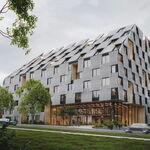sche
Active Member
Yeah, the fundamental reason why we're stuck with LRT is because we build completely at grade LRT for the same price Spain, Italy, Turkey, Finland, etc. builds fully underground heavy metro in good conditions.I don't know about that. Let's be generous and say each extension was $3 billion cheaper. That gives us $6 billion which is enough to build maybe two Finch West LRTs? A nice addition, but not game changing.
Now, I don't support deep subways in the suburbs. I'd be happy to have an elevated heavy rail/medium metro on my arterial.
But LRTs/light metro/whatever have been subject to the exact same cost problems.
When subways cost <100M USD/km, it starts making sense to put subways everywhere.
Even at ~200M USD/km (French or German costs), subways still make a lot of sense in a lot of places.
But when subways cost $400+ M USD/km and increasing, obviously building stuff becomes impossible. This crazy cost issue is the #1 problem with transit construction in North America and yet it seems nobody is trying to fix it.
And, since North America seemingly didn't know about automated elevated light metro which has been a thing in Europe since the 1990s, we end up with these slow, unreliable, cost-inefficient, high operating cost, and inferior capacity half-measures known as LRTs.





